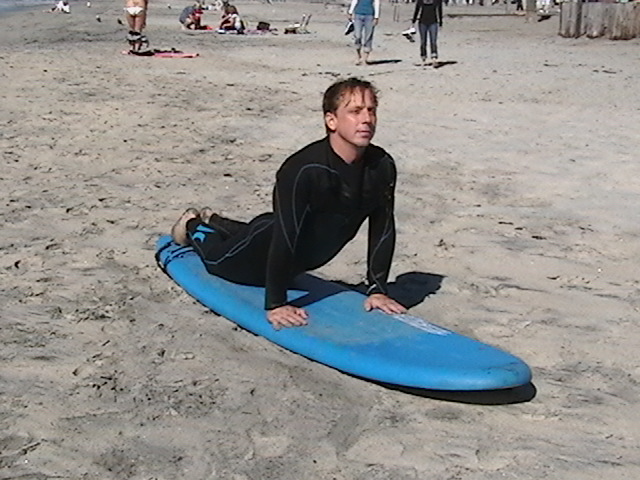Beginner Surfers Learn the Popup Technique

Learning the pop-up in surfing is one of those essential skills that every beginner needs to master. It’s that thrilling moment when you go from paddling to actually standing and surfing the wave.
It sounds simple, but it involves a precise series of movements that set the foundation for all your future surfing skills. So, let’s break it down step-by-step, so you can visualize and practice it even before you hit the water.
Imagine you’re out in the ocean, you’ve spotted your wave, and you’re ready to catch it. You start by paddling hard. Once you feel the wave has caught you, that’s your cue to stop paddling. Now, you’re going to transition into the pop-up.
First, you’ll take four paddles. This isn’t just for show—it helps you build momentum and stability. After your fourth paddle, you’ll place your hands flat next to your rib cage, just like you would for a man’s push-up. This is where you prepare to lift your body.
Hold this position for about three seconds. This brief pause is crucial—it’s where you gather your poise and balance. You need this moment to ensure you don’t rush and throw off your balance.
Then, when you’re ready, you push up from your hands, much like pushing up in a push-up. Here’s where it gets exciting: as you push up, pull one foot—let’s say your left foot—under your butt, right up near your hands. You’ll stand on that foot for a few seconds.
This moment is key because it stabilizes you as you rise up. Then, as you start to feel steady, move your other foot—the right one—in front of your body. Now, you’re almost there.
In your final posture, you should be facing forward, your hands out in front of you for balance, not touching the board anymore. Your weight should feel evenly distributed between your front and back leg, and your knees should be flexed. This stance not only helps you stay balanced but also allows you to start feeling the board with your feet.
Feeling the board is critical because your feet are now your controls. They help you steer and maneuver the board. The better you can feel the board, the more control you’ll have over where you go on the wave.
This whole process might sound complex, but with practice, it becomes a fluid, almost second nature movement that you’ll do without much thought as you catch wave after wave.
The best way to get there is to practice these movements on the beach or even at home on a yoga mat. Visualize the waves, the board, and the sensation of the ocean beneath you. By the time you get to the water, your body will remember what to do, and you’ll be popping up and riding the waves like you were meant to do it all along.
Book a Lesson on the Home Page
Find good books to read on the SurfBook page
#surflessonsinoceanside, #learntosurf, #overweightpeoplecansurf, #getfittosurf